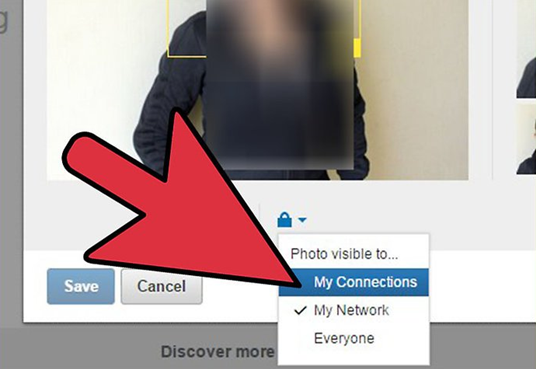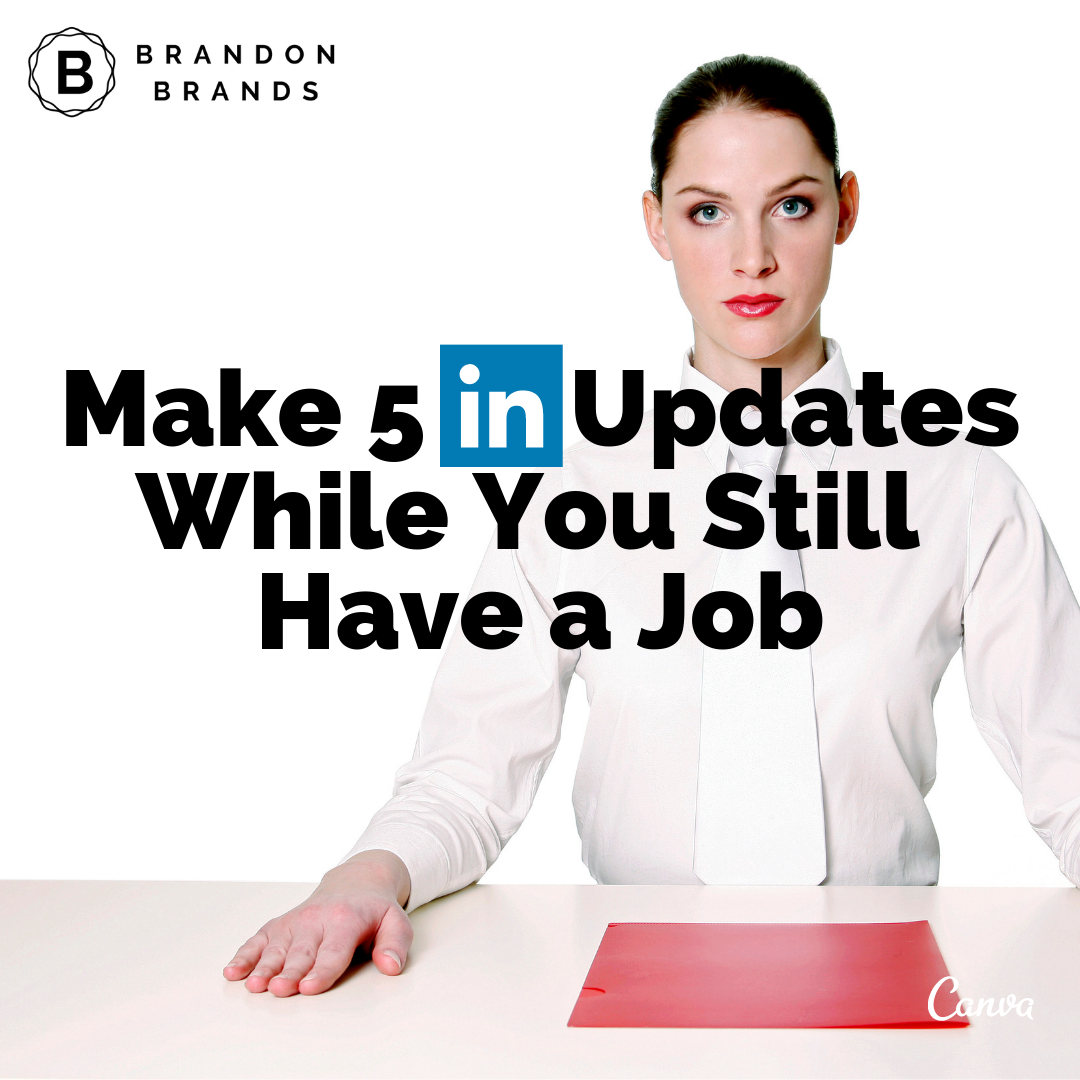We have all been guilty of it. If you have a job in corporate America, you’ve probably waited until you were jobless to update your resume and your LinkedIn profile. Today is the day to stop wasting these valuable opportunities.
Build your personal brand today, to thrive tomorrow. That means investing in your relationships, elevating your reputation, telling your story, and selling your skills.
To often, we use LinkedIn as an outdated resume! And when we think of resumes and sites like LinkedIn, we only use them to share our job experience. It’s not unique. It does not help us. We are not giving ourselves the credit we deserve.
If you want to leverage this platform and build your future opportunities, here are 5 things you can start doing today.
1. Look Forward, Not Backward

Many LinkedIn profiles read like a long-winded resume.
Even if you’ve done a great job capturing the value you provided to your previous employers, you are still looking backwards.
And the bio’s often read like a bad summary of those past experiences, peppered in with some objectives or current job titles.
Stop looking backward.
The best thing you can do with your profile on LinkedIn is talk about what you are doing right now as if you were speaking directly to the customers of your current company.
For example, if you are manager at a retail store, talk about what makes the store unique and why customers love it. Tell stories of real customers you’ve interacted with and how happy they were doing business with your store. Talk about what’s new this time of year and what you are excited about right now. Pretend it’s your business and talk about it as if every customer was reading this profile right before they walked in the door. What would they want to hear? How can you help them go from undecided to converted?
Now every time someone you are connected with comes across your profile, they’ll know exactly what you do and more importantly, they’ll see the kind of value that you like to bring to your company. Now you are acting like an advocate of the business rather than just an employee.
2. Make Yourself Approachable

This should be obvious, but you have to make people want to say hello. Too many profiles are leaving out critical information.
Think of your LinkedIn profile as an invitation. It should help people understand what you can do for them and how to connect with you.
You need to include all of the core elements. This includes a great looking picture, your contact information, and some reasons to connect with you.
But covering the basics is not as easy as it sounds! Here’s why.
Profile picture — your profile picture isn’t automatically visible to people outside of your immediate network. The site makes you go out of your way to make your profile and separately your profile picture visible to the public. Your settings need to be changed in two different places for it to work. First when you click on your profile settings you need to make it visible to everyone (see below). And when you click on your profile picture to update it, you’ll be able to find a button to make that visible as well to everyone (see below).


3. Use Your Intro to Introduce Yourself

Many people are using the LinkedIn profile intro as a quick summary of their work history and maybe they add a blurb about what they are looking for in their next job. No one wants to read that!
Your LinkedIn profile should truly be an introduction. Not an introduction to your next HR recruiter, an introduction to your company’s next potential customer.
When you meet someone you can potentially do business with, what’s the first thing you tell them about you and the company you currently work for? Tell them who you are and how you and your company help people. And be specific! Talk about the few things that will benefit potential customers the most.
Why is it more important to speak to potential customers instead of HR recruiters?
Because when you have a job, the recruiters want to see that you are doing everything you can to grow your company’s business. You are demonstrating the type of value you can bring to a company instead of just talking about it.
And when you are done introducing yourself, provide a next step. Let them know right there in the introduction, how to contact you, what to contact you about, where they can find you on social media, and any links to your current work or your current company’s website. And if you have your own website, include that as well.
4. Start Writing

Today, you should start writing. You should write posts and you should write articles. You can start with writing posts that share a very quick blurb as commentary on other people’s articles relevant for your industry.
Then work your way up to picking a few topics related to your current job and writing about them. They can be glimpses into your daily job, or how to articles, or things you’re learning along the way.
Now’s the time to start to develop your voice within your industry. Every person’s perspective is unique and everyone’s history and style is personal which is what makes it valuable.
When you write, you are forced to develop your perspective. Then when you are being considered for your next job, the decision maker will get a glimpse into how you think. You’ll be one step ahead of the person who didn’t take the time to develop an opinion.
Everything you write should be professional. You should not be talking about anything that is proprietary to the company you work for. You should not mention your company or clients or refer to them without consent. But there are always ways to talk about your experience and learnings more broadly with the intention of adding value. Use your judgement as to what’s appropriate and if you have questions, just talk to your employer about it so everyone is on the same page.
The best part is that as you write and create content, your current connections start to get to know you a little better. You are building your reputation one brick at a time. And you are introducing yourself to new people who may want to connect with you in the future. Maybe your next job or client is sitting out there right now, ready to stumble upon your next article or post. At very least, you should give yourself that opportunity.
5. Build New Relationships

The best thing you can do right now is to start investing in the relationships you already have. And a close second is to start cultivating new ones. So many people make a connection over the course of their career and then neglect it after they change jobs.
Your best references and your best referrals will always be the people you’ve built trust with in the past.
But it takes work to nurture those relationships after the working partnership has ended. You can come up with your own strategy, but you should figure out how often you want to say hello to old contacts and what you want to say. It could just be every 6 months you reach out and say hello and that you hope they are doing well.
If you pay attention, you’ll notice when your connections reached certain milestones and that can be a great opportunity to check in. When you do this, you are showing your connection that you value their relationship even when you don’t need something.
And the best thing you can do is to pay attention to what you can do for others. Listen to what they say and do and if you can add value when they need it, you’ll have someone there for you if you ever need it.
Another idea is to interact with other people’s content in your feed. Show them that you are listening. Like and comment on their posts. Be active. Also, find content you like from people you don’t know and interact with them. If you do it long enough, you may find that you have something in common and your digital connection may one day become a real-life connection.
Yes, it is a lot of work!
It takes effort to consistently check in and interact on social media. But it’s a lot easier to find a small block of time each week now, than to start to hit everyone up when you are unemployed.
If you only reach out to people when you need something, and you never add value, those people aren’t going to be inclined to help you.
And at the end of the day, it’s just the right thing to do. When you are succeeding in life, you should be out there finding ways to share that with others. It feels good. It’s the right thing to do. And it always comes back to you.
